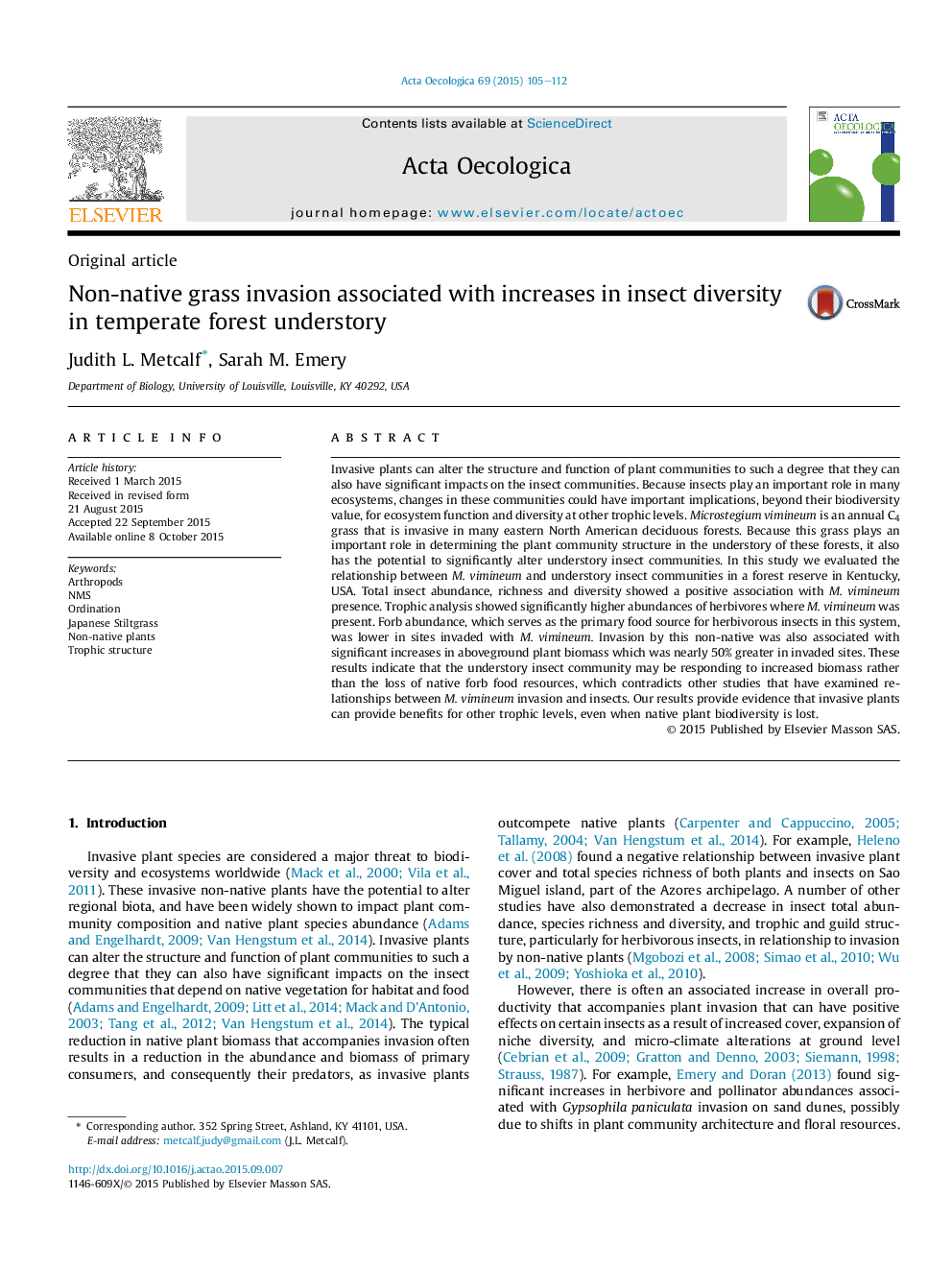| Article ID | Journal | Published Year | Pages | File Type |
|---|---|---|---|---|
| 4380646 | Acta Oecologica | 2015 | 8 Pages |
•We evaluated effects of an invasive grass on forest understory insect communities.•Insect abundance and diversity were positively associated with Microstegium vimineum presence.•Insect herbivores had strongest positive response to M. vimineum presence.•Aboveground plant biomass was nearly 50% greater in invaded sites.•Invasive plants can provide benefits for other trophic levels.
Invasive plants can alter the structure and function of plant communities to such a degree that they can also have significant impacts on the insect communities. Because insects play an important role in many ecosystems, changes in these communities could have important implications, beyond their biodiversity value, for ecosystem function and diversity at other trophic levels. Microstegium vimineum is an annual C4 grass that is invasive in many eastern North American deciduous forests. Because this grass plays an important role in determining the plant community structure in the understory of these forests, it also has the potential to significantly alter understory insect communities. In this study we evaluated the relationship between M. vimineum and understory insect communities in a forest reserve in Kentucky, USA. Total insect abundance, richness and diversity showed a positive association with M. vimineum presence. Trophic analysis showed significantly higher abundances of herbivores where M. vimineum was present. Forb abundance, which serves as the primary food source for herbivorous insects in this system, was lower in sites invaded with M. vimineum. Invasion by this non-native was also associated with significant increases in aboveground plant biomass which was nearly 50% greater in invaded sites. These results indicate that the understory insect community may be responding to increased biomass rather than the loss of native forb food resources, which contradicts other studies that have examined relationships between M. vimineum invasion and insects. Our results provide evidence that invasive plants can provide benefits for other trophic levels, even when native plant biodiversity is lost.
